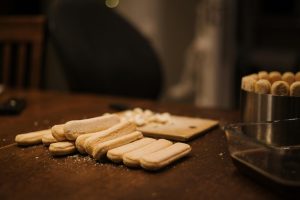Historic Home Preservation: Balancing Character and Modern Needs
Preserving historic homes is a delicate balance between maintaining the character of the past while meeting the needs and standards of the present. These well-loved structures often hold significant cultural and architectural value, making their preservation a top priority for many homeowners, communities, and historical organizations. However, with modern advancements and the desire for modern conveniences, finding this balance between old and new can be a challenge. In this article, we will explore the key considerations and methods for successfully preserving historic homes without sacrificing their character and charm.
The Significance of Historic Home Preservation
Before we delve into the balancing act of preserving historic homes, it is crucial to understand the significance of these structures. They serve as tangible links to our past, offering a glimpse into the unique stories and experiences of those who came before us. They also contribute to the overall character and identity of a community, providing a sense of continuity and pride.
Beyond their cultural and sentimental value, historic homes also hold significant architectural merit. Many of these structures feature exquisite craftsmanship and design elements that are not often seen in modern constructions. Preserving these architectural gems allows us to appreciate and learn from the past while also providing inspiration for future designs.
Challenges of Historic Home Preservation
While the importance of preserving historic homes is clear, it is not without its challenges. One of the main obstacles is finding a way to balance the integrity of the past with the demands of the present. In many cases, historic homes were not built to accommodate modern amenities such as central heating, electricity, and plumbing. Yet, these are essential for comfortable living in today’s world.
Another challenge is the cost associated with preserving these homes. Many of these structures require specialized materials and techniques, which can be costly. Additionally, strict regulations and guidelines for preserving historic homes may limit the options for renovation and maintenance, leading to higher expenses.
The Importance of Research and Planning
One of the key elements in successfully preserving a historic home is thorough research and careful planning. This process should begin before any work is started and should involve consulting with local historical societies and experts in historic preservation. These organizations can provide valuable insights and recommendations on how to preserve the character and integrity of the home.
Research should also include a thorough inspection of the home to identify any potential issues or areas that require special attention. This will help in budgeting and prioritizing repairs and renovations. It is also essential to research the history and architectural style of the home to ensure any changes align with its original design and character.
Leveraging Modern Technology
While preserving the character of a historic home is crucial, it does not mean that modern technology and methods should be completely disregarded. In fact, advancements in construction and renovation techniques can make it easier to preserve and maintain these structures. For example, new methods of insulation can be used to improve energy efficiency without compromising the home’s appearance.
Similarly, new materials can be used to restore and replicate historic features such as windows, doors, and trim. These materials are often more durable and cost-effective, making it easier to maintain the home’s original character while also improving its functionality.
Preservation, Not Restoration
It is important to note that historic home preservation does not necessarily mean restoring the home to its original condition. This may not always be feasible or practical. In cases where this is not possible, preservation efforts should focus on maintaining the home’s character and history rather than trying to replicate it perfectly. This may involve incorporating modern features while still honoring the home’s original design and style.
Final Thoughts
Preserving a historic home is a delicate and complex process, requiring a balanced approach that considers both the past and the present. Through thorough research, careful planning, and a willingness to embrace modern technologies and methods, it is possible to maintain the character and charm of these structures while also meeting the needs of modern living. As we strive to preserve these architectural treasures, we not only honor our past, but we also leave a legacy for future generations to appreciate and enjoy.










